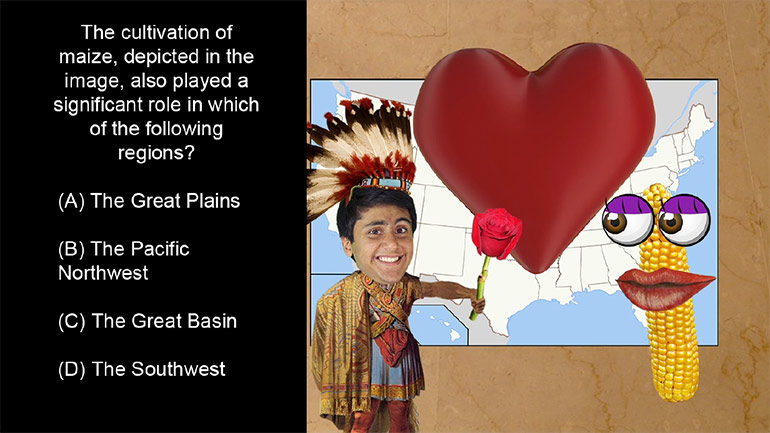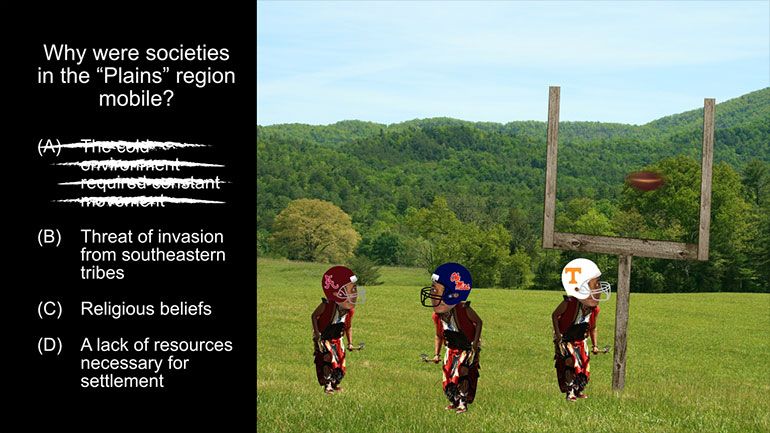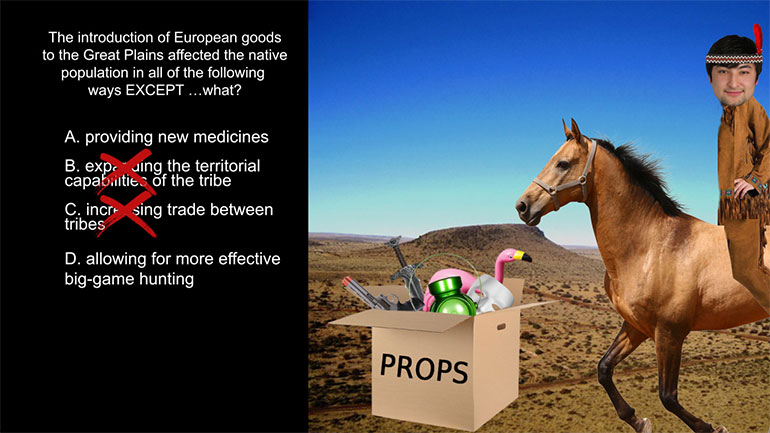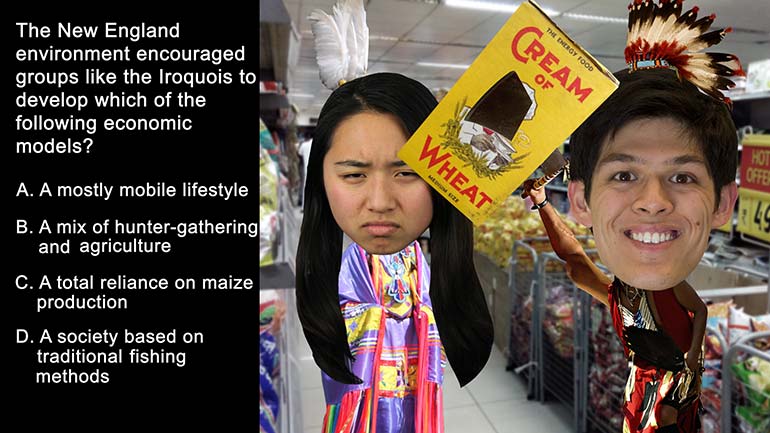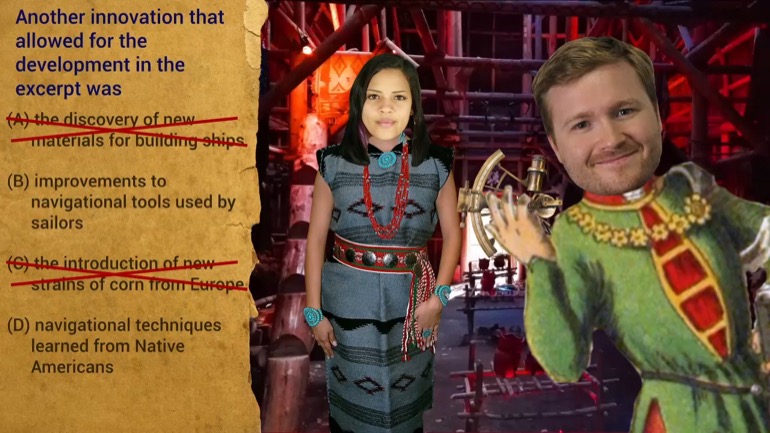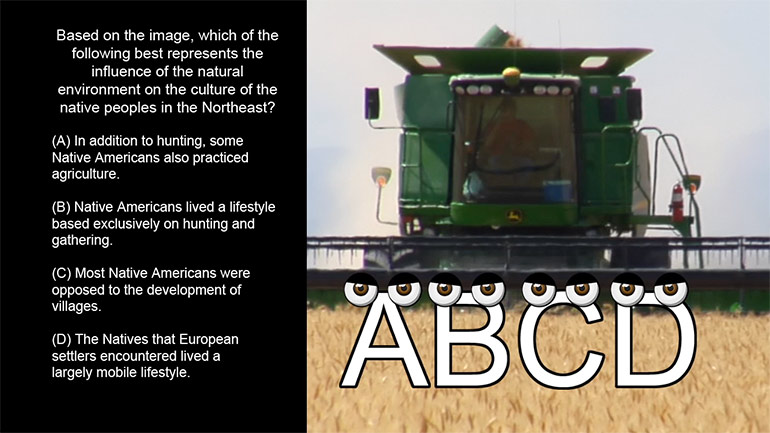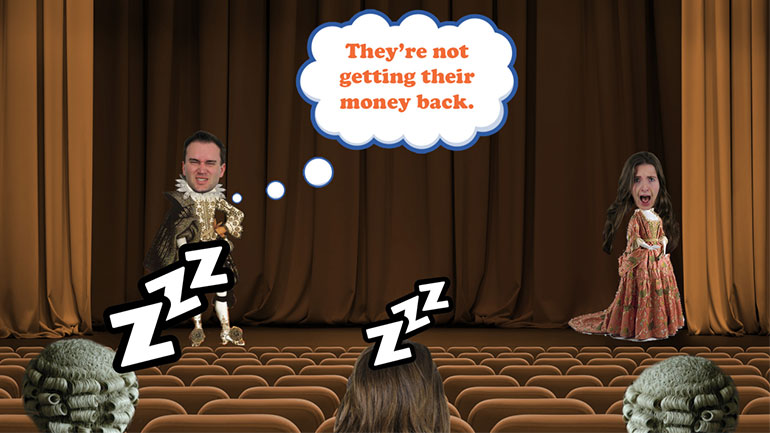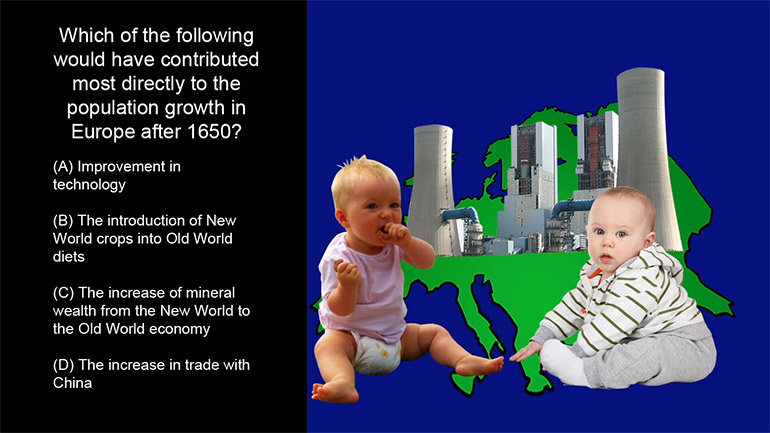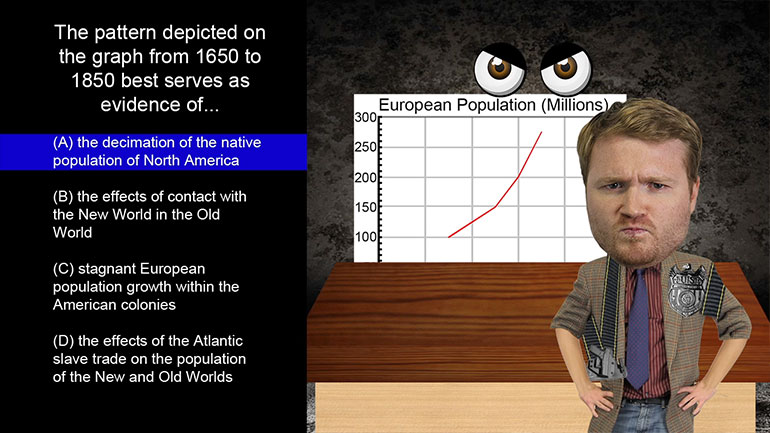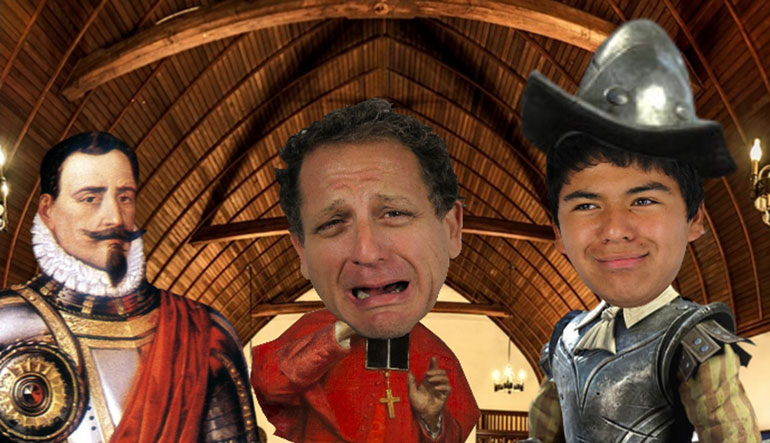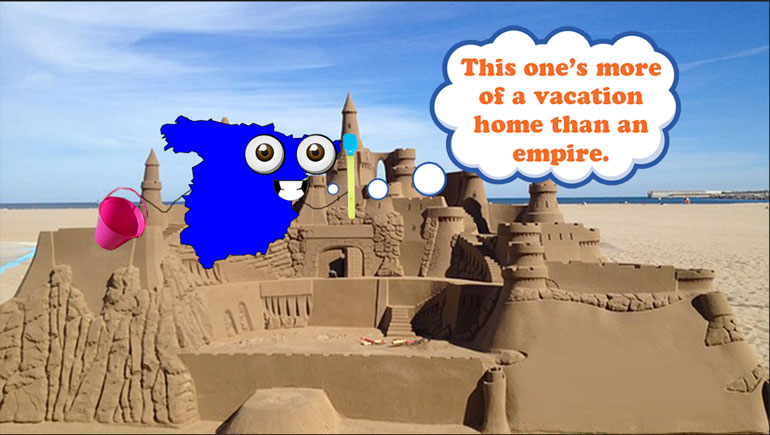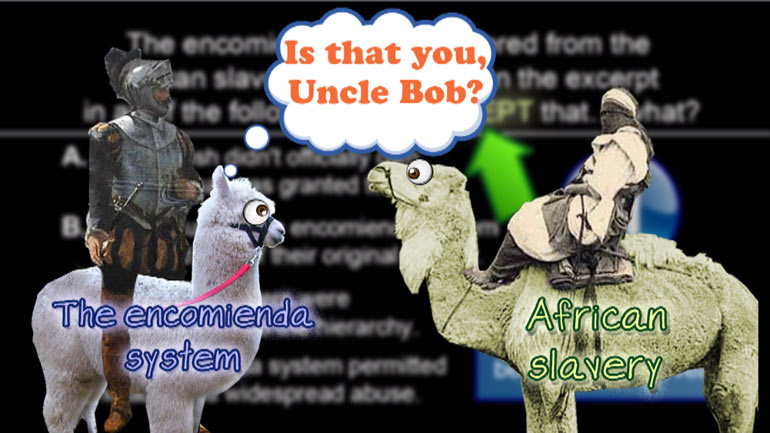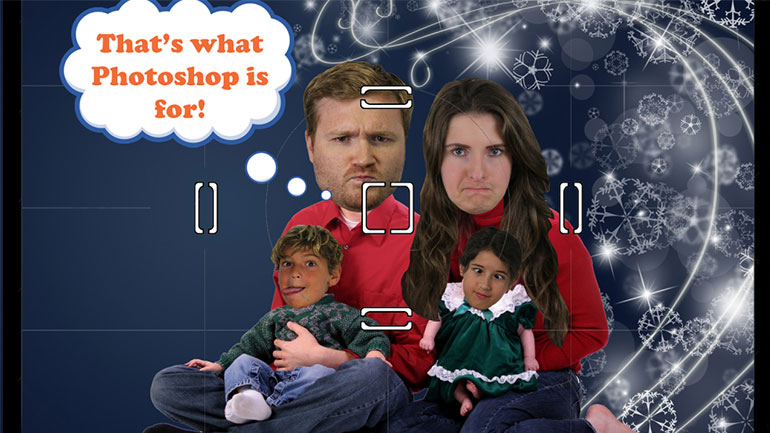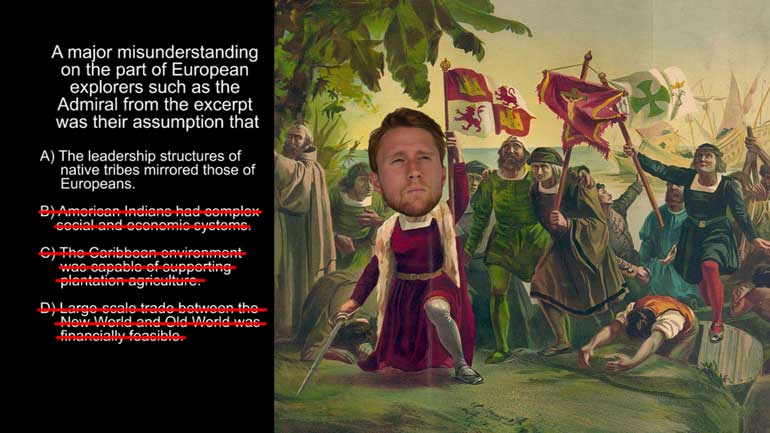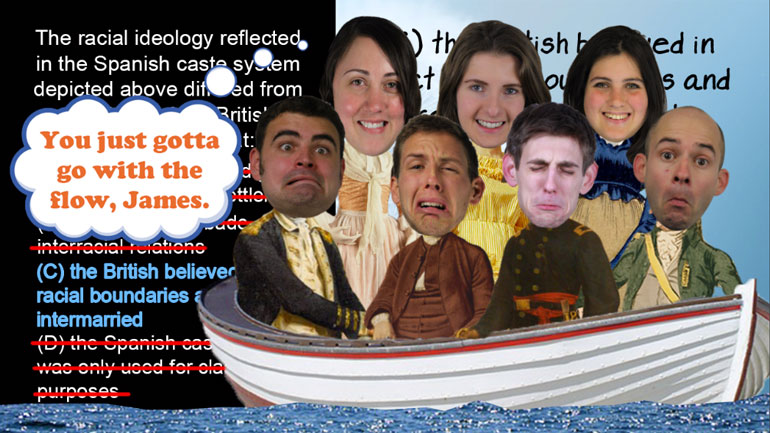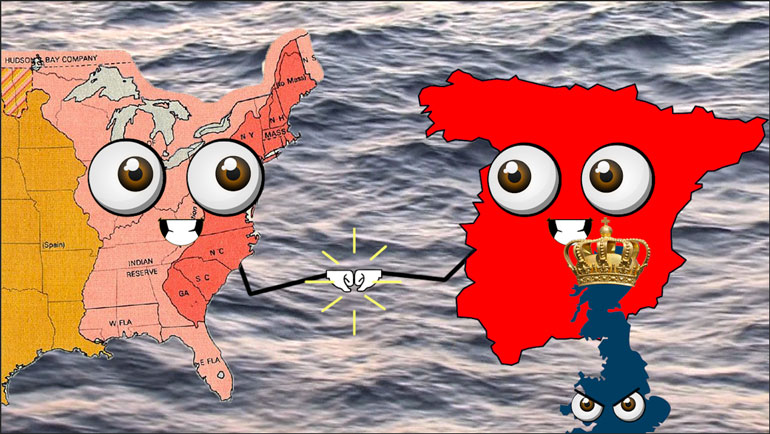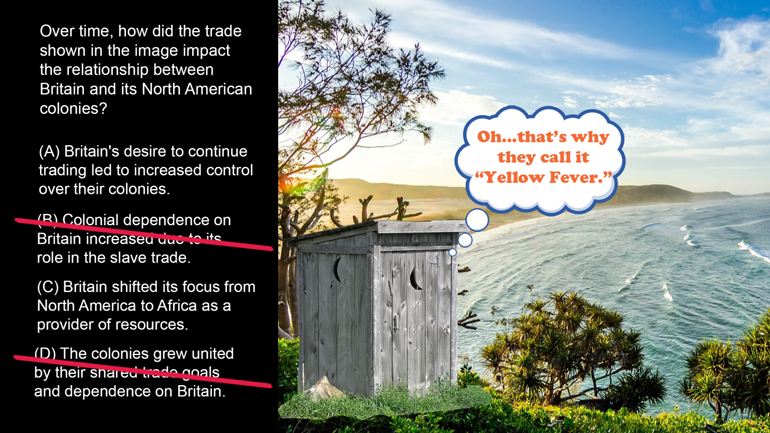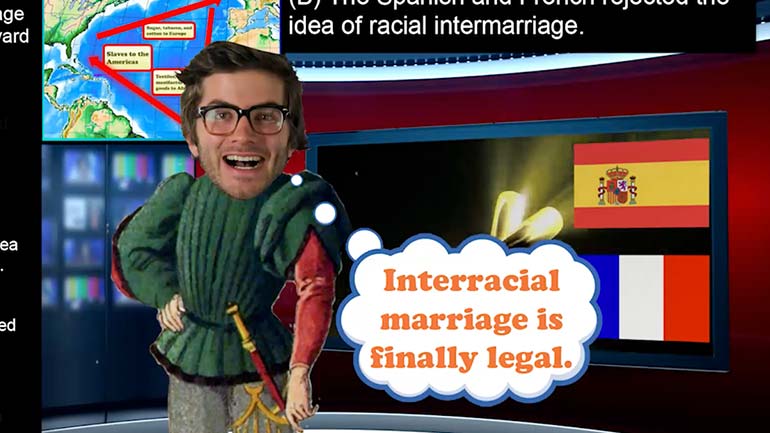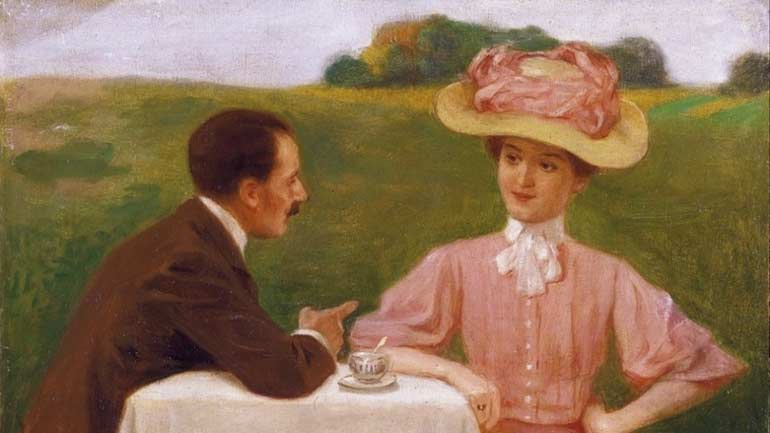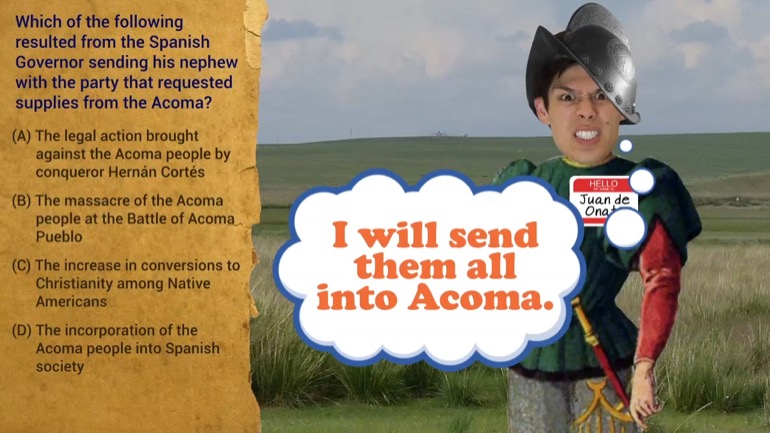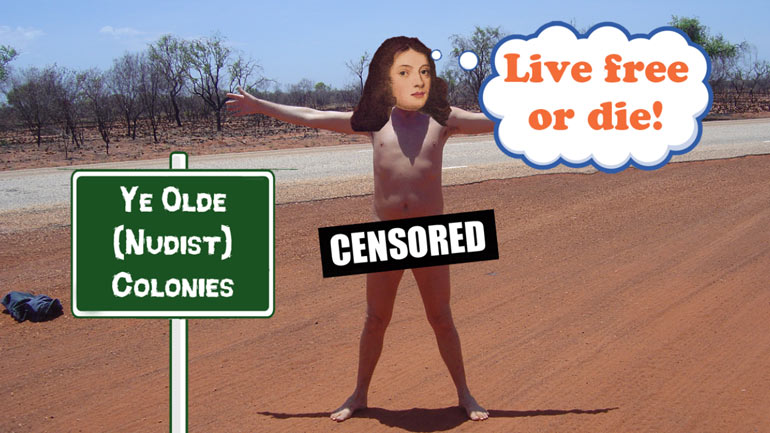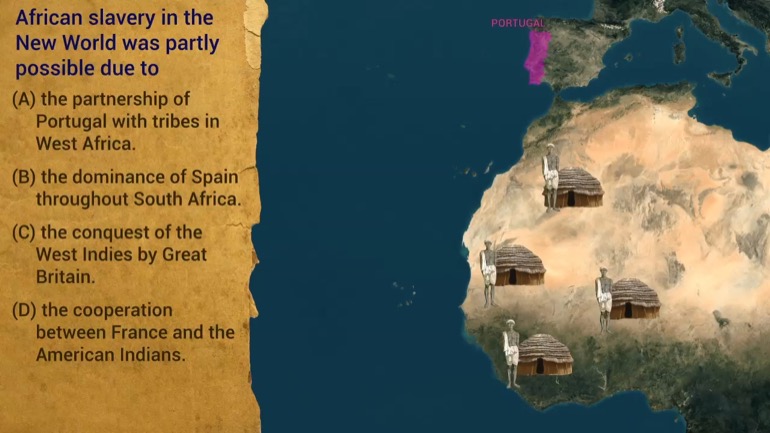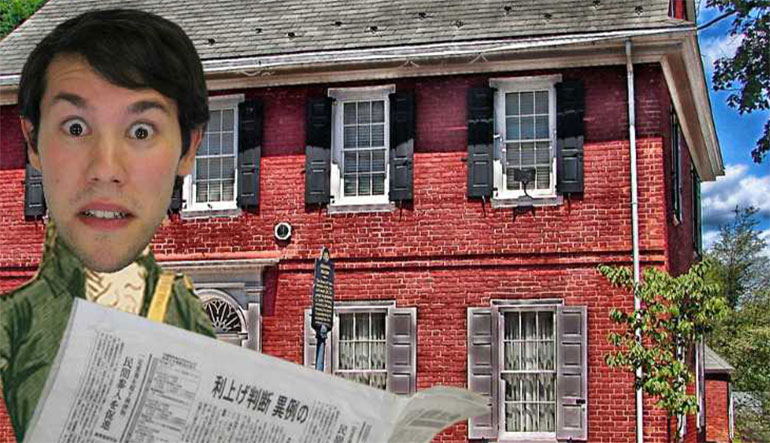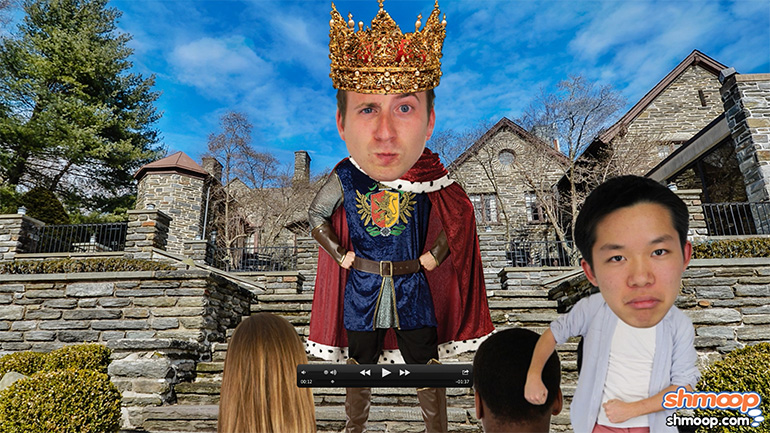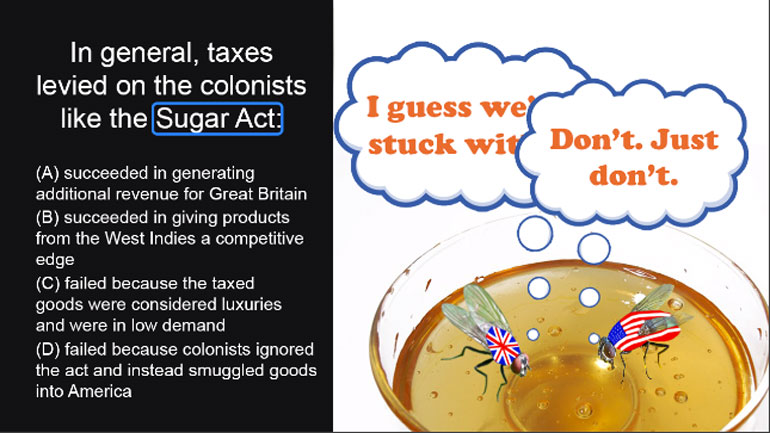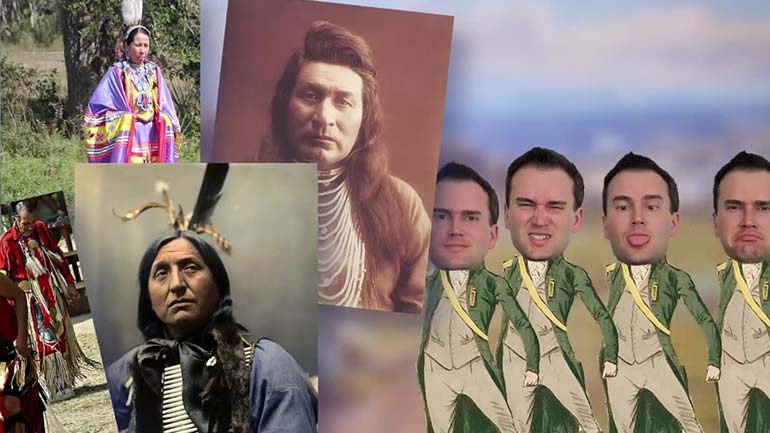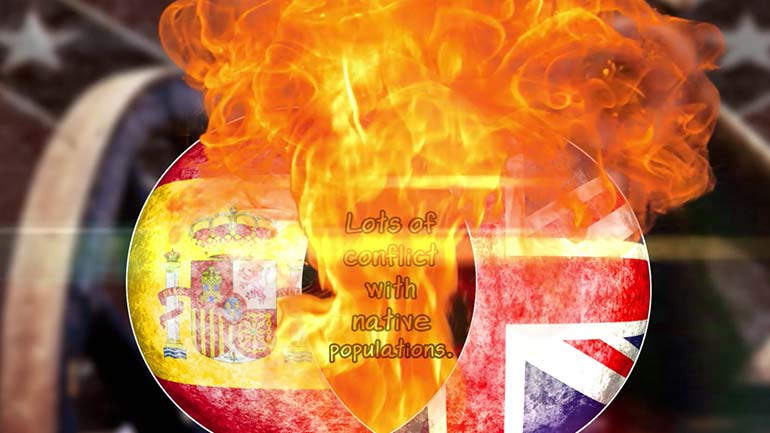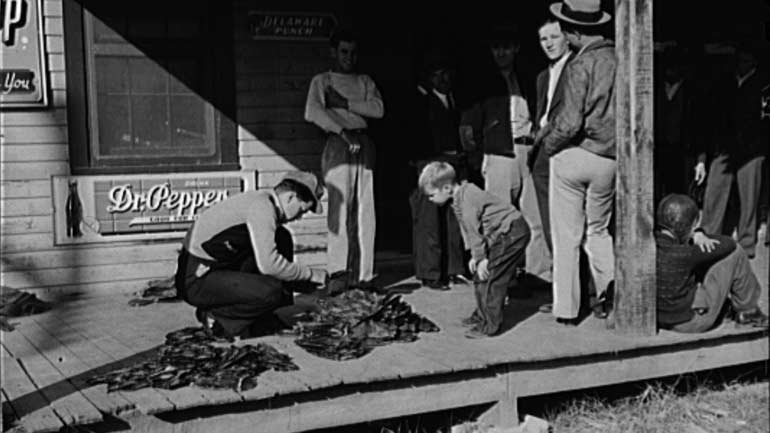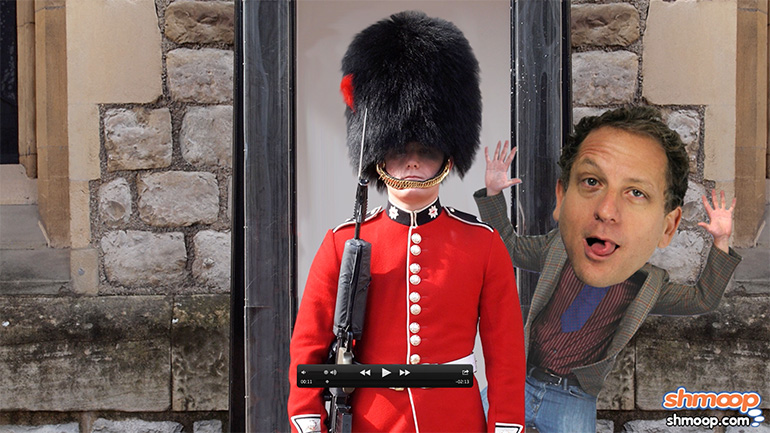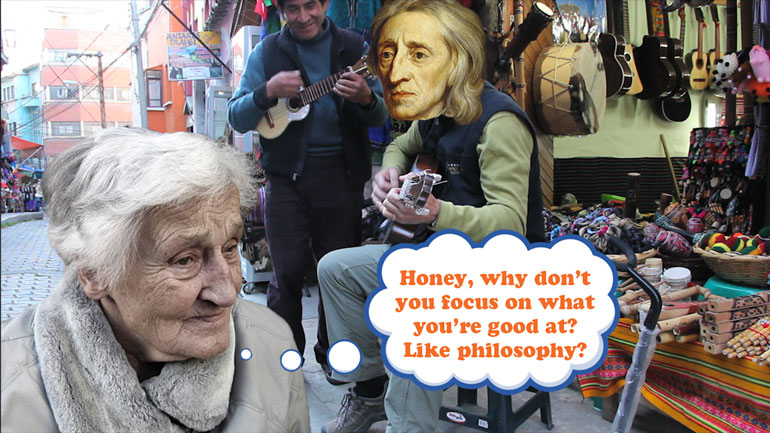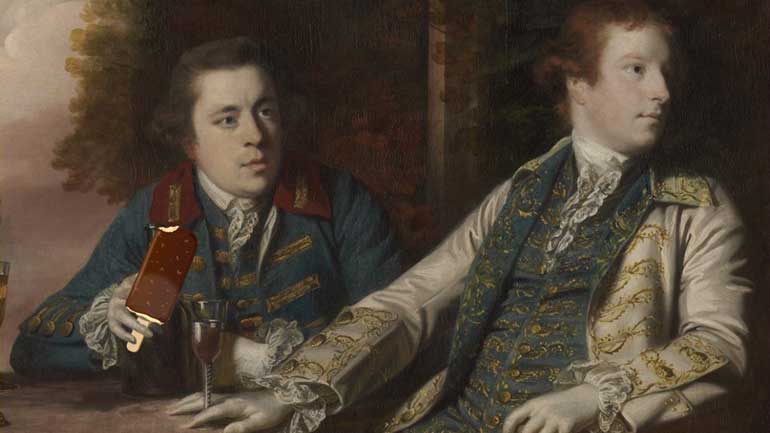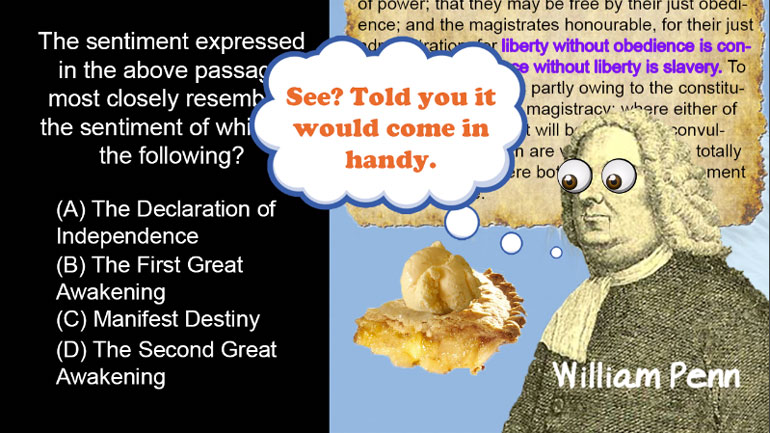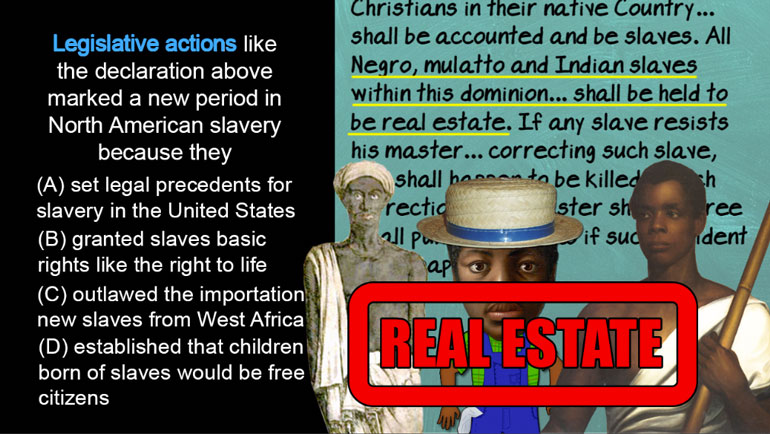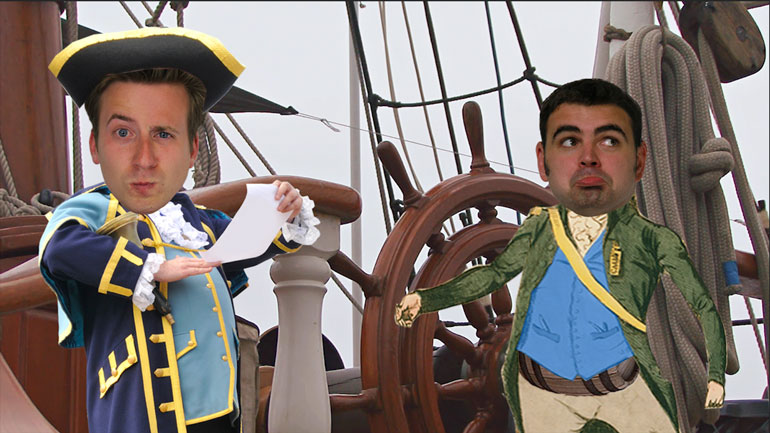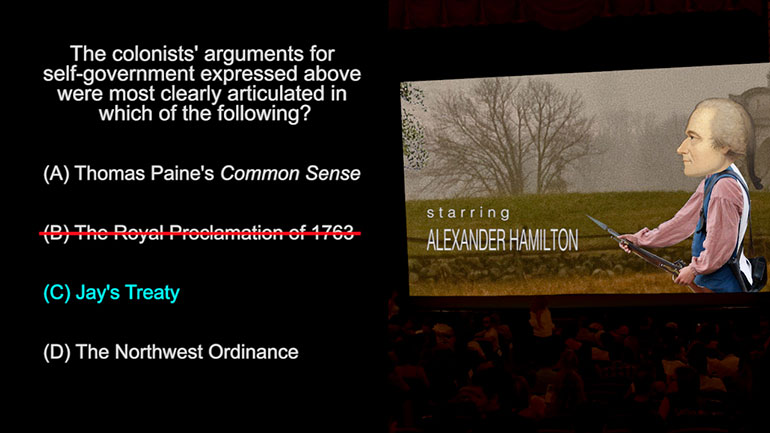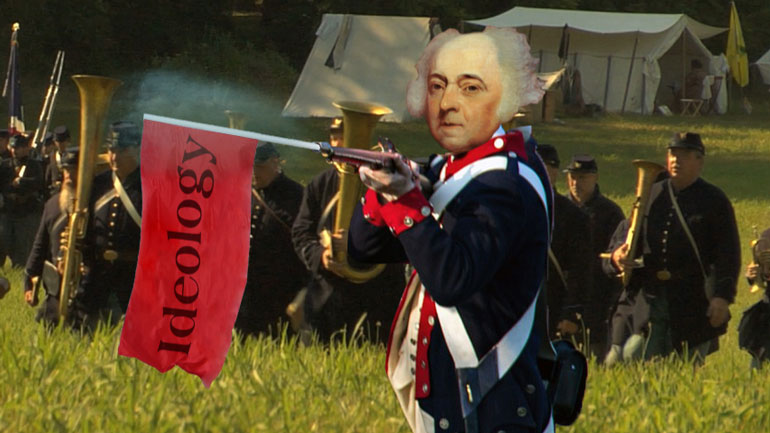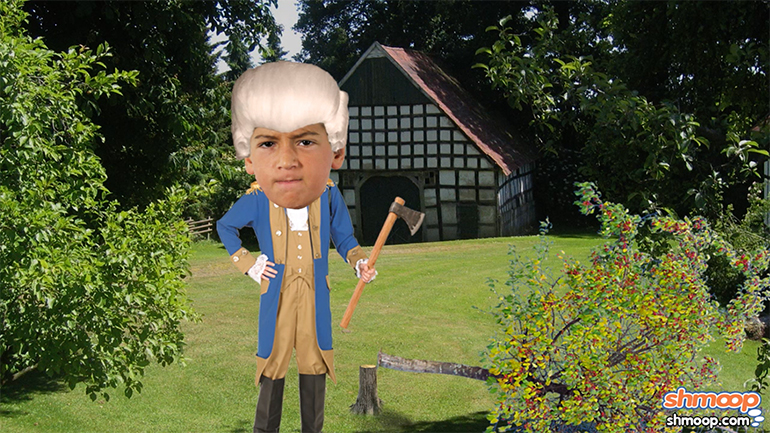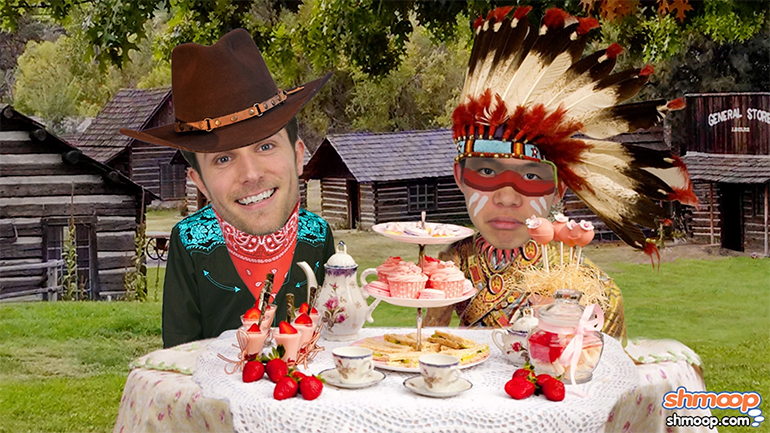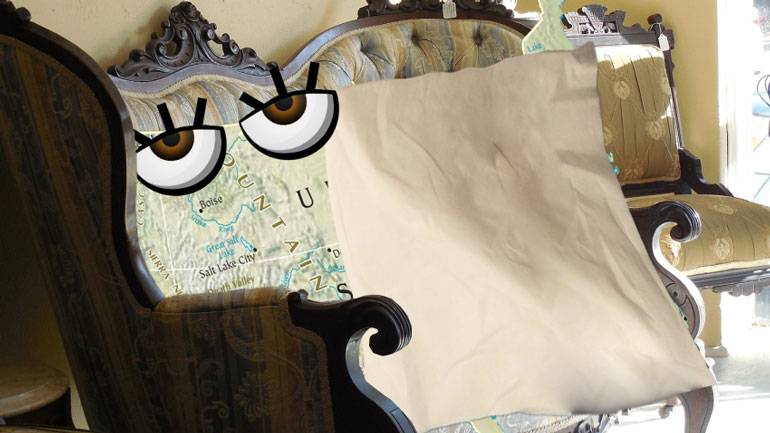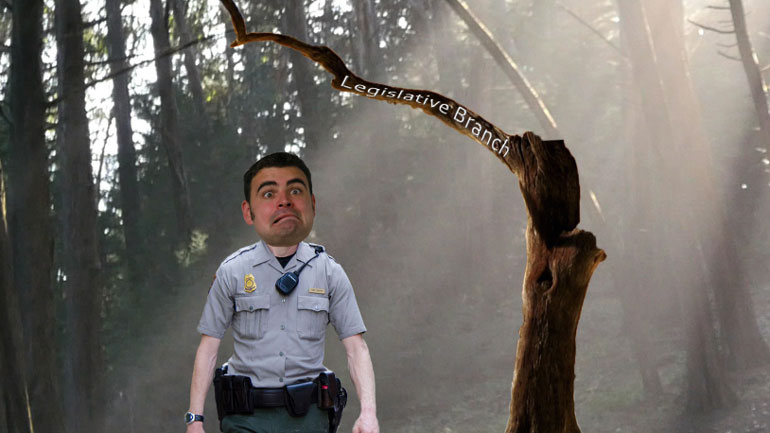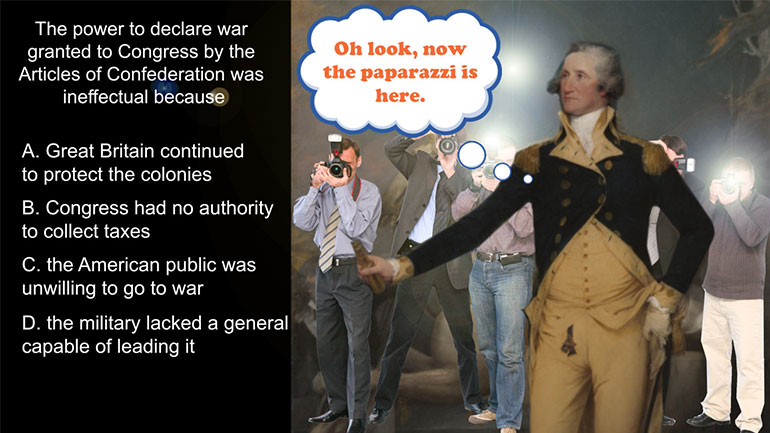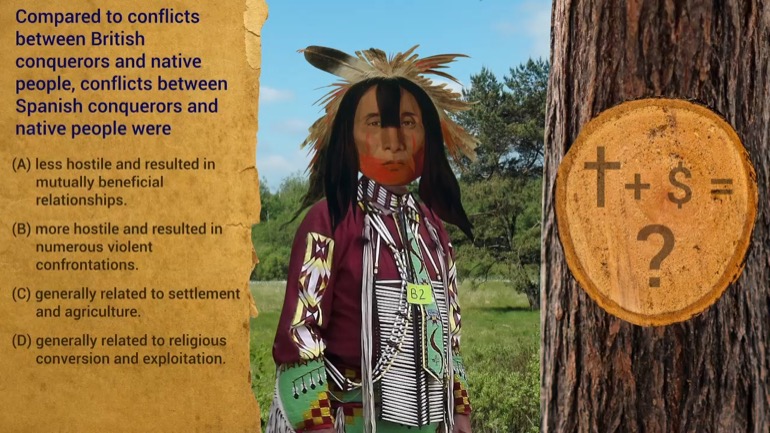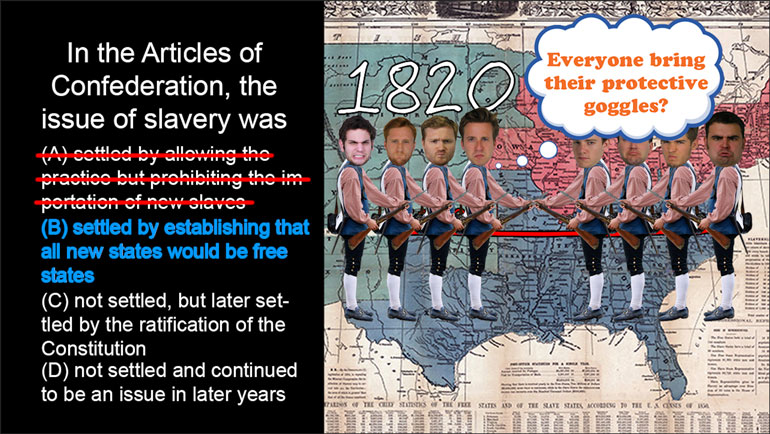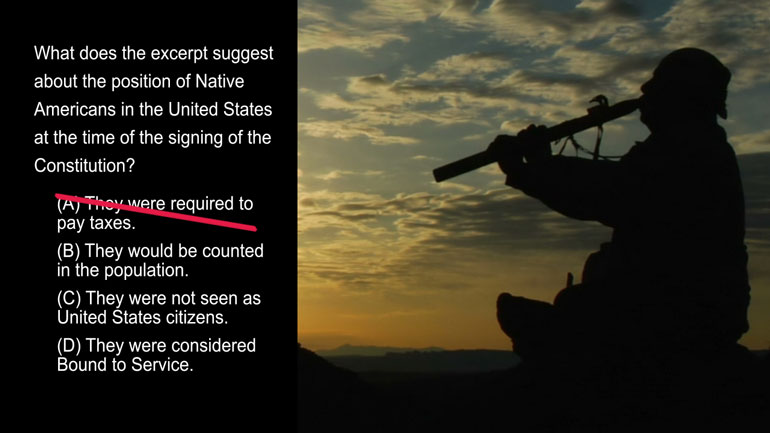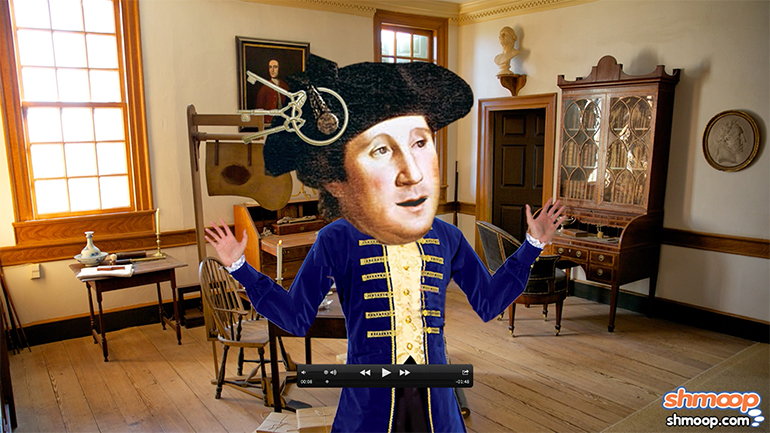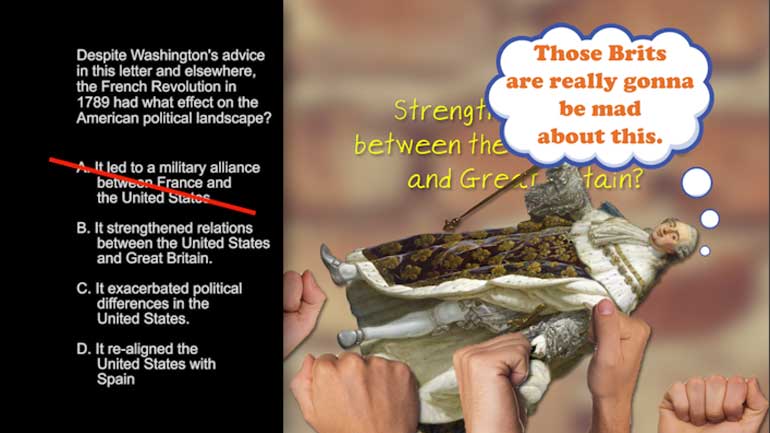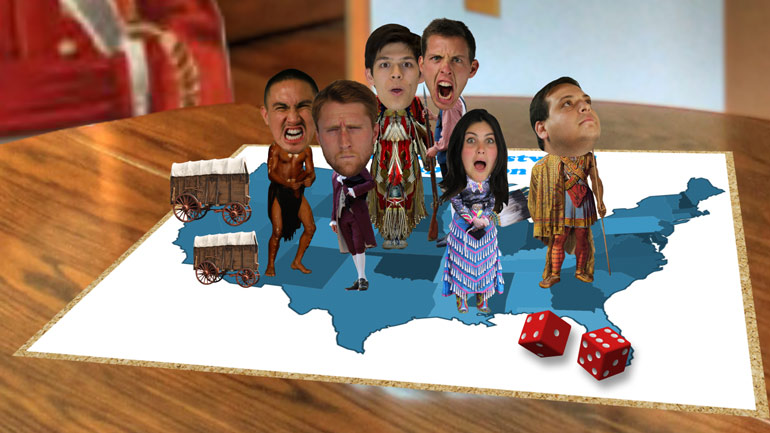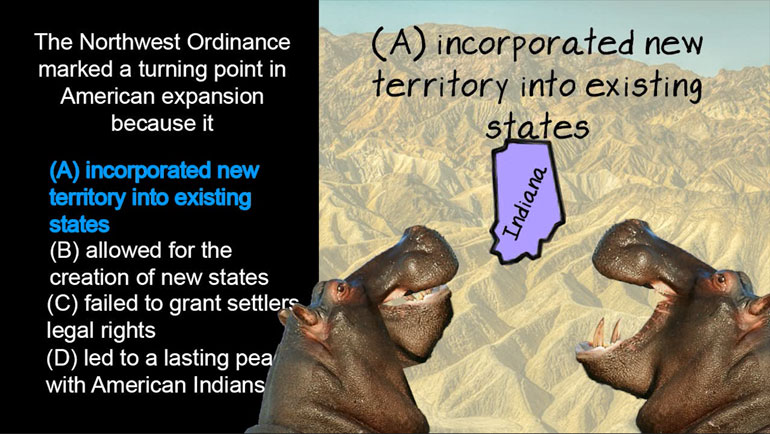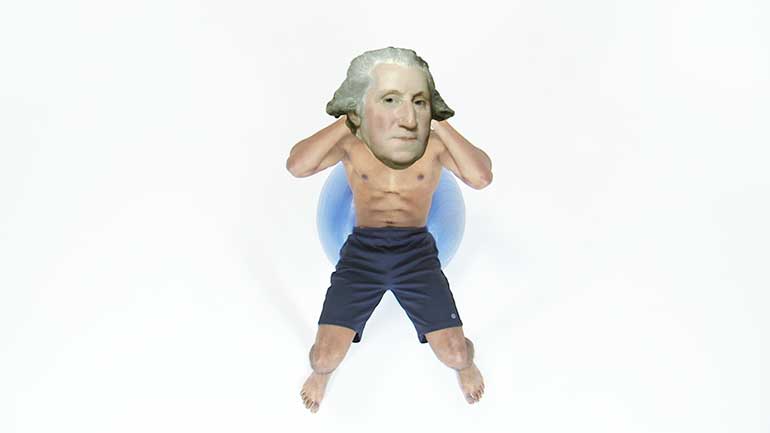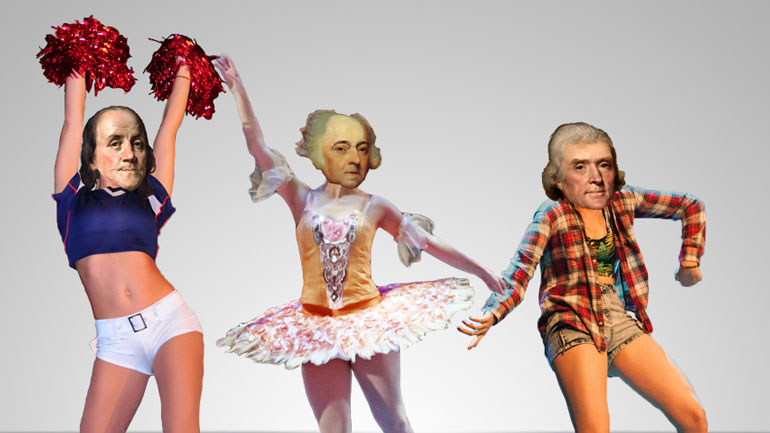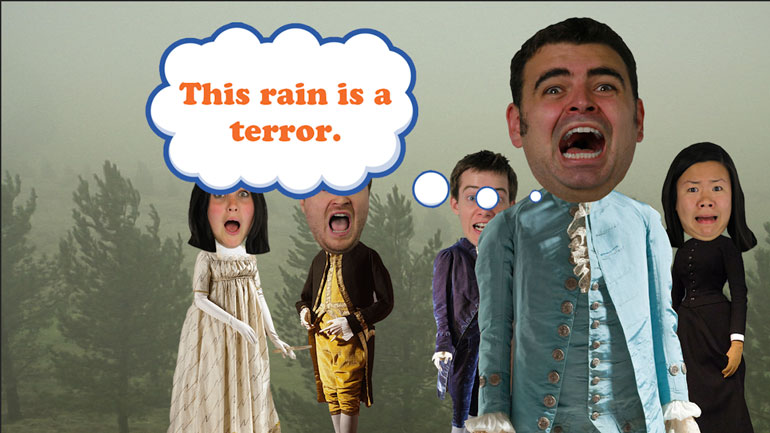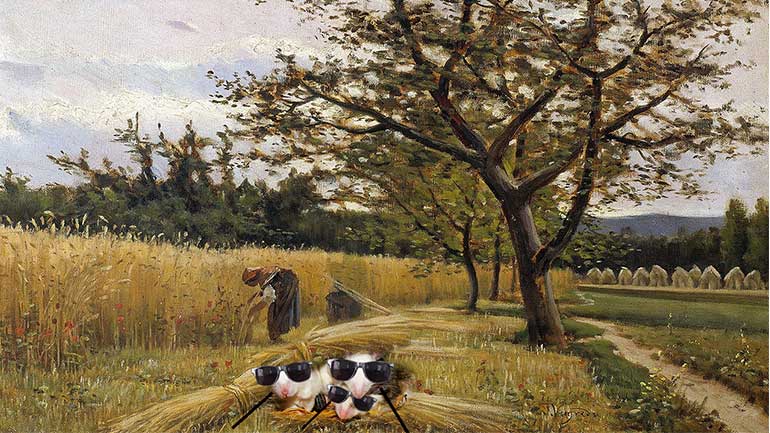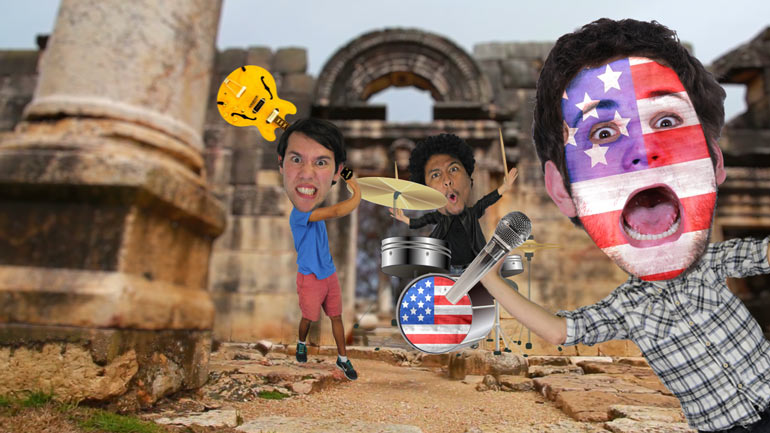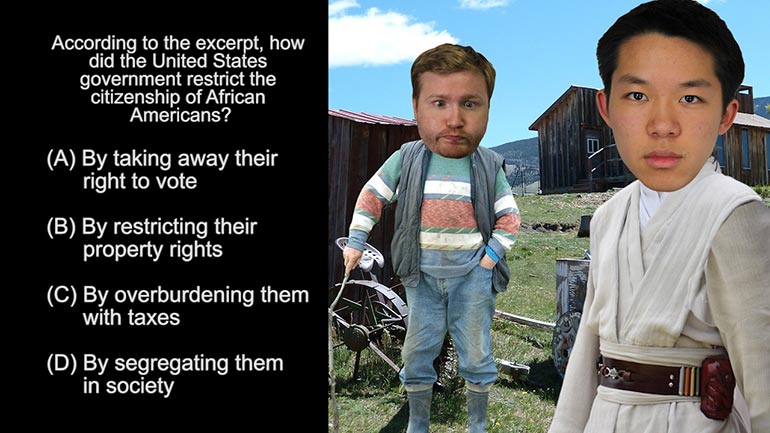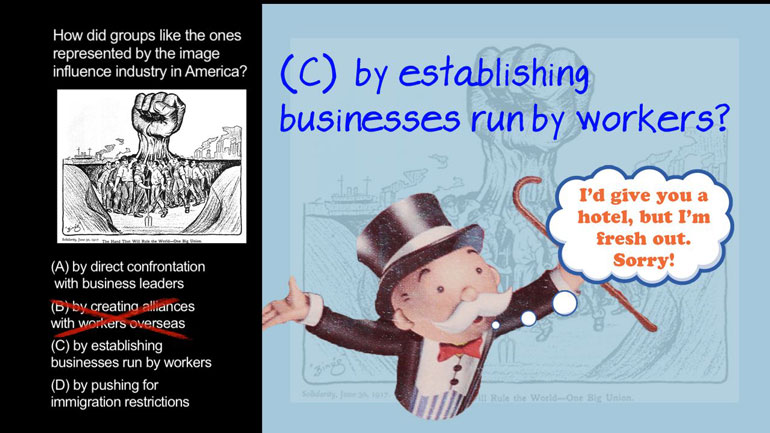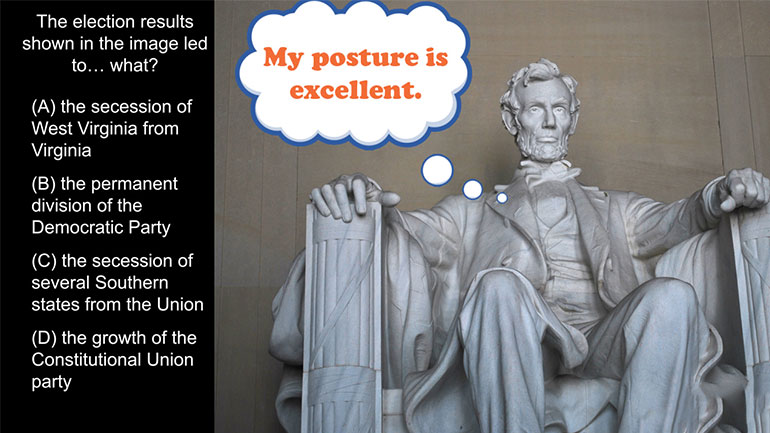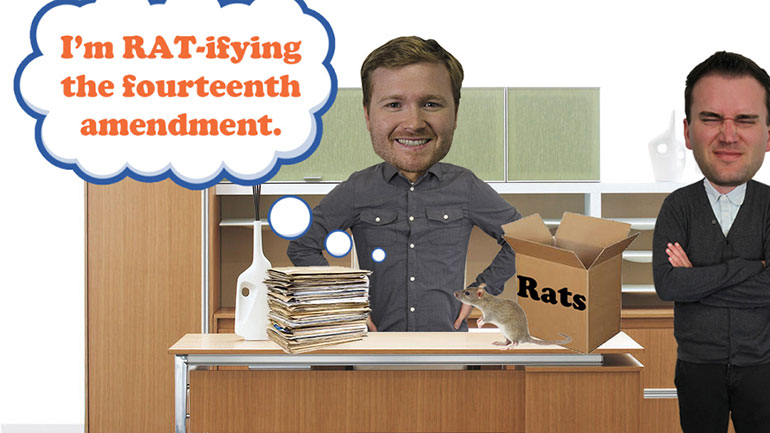ShmoopTube
Where Monty Python meets your 10th grade teacher.
Search Thousands of Shmoop Videos
AP U.S. History Videos 273 videos
Today's lesson: The Civil War. A war may be civil, but it's never pretty. Well, aside from the Pretty Pink Fairy Wars of '93...but no one seems to...
AP U.S. History Period 1: 1491-1607 Drill 3, Problem 2. The cultivation of maize, depicted in the image, also played a significant role in which of...
AP U.S. History Exam 2.2. Prior to European contact, why was it necessary for the societies of the "Plains" region on the map to live a mobile life...
AP U.S. History 4.2 Period 1: 1491-1607 214 Views
Share It!
Description:
AP U.S. History 4.2 Period 1: 1491-1607. One direct long-term effect of the process described in the excerpt was what?
Transcript
- 00:00
Thank you We sneak and here's your shmoop to shore
- 00:05
brought to you by long term effects Studies have shown
- 00:08
that long term effects of shmoop dues yours include higher
- 00:11
test scores lower tolerance for puns and superhuman strength All
- 00:16
right fine We made it the pun thing but well
Full Transcript
- 00:18
who doesn't love a good pun Check out the following
- 00:20
excerpt European experience getting in america and lost solves mississippi
- 00:25
river and european All right And now for the question
- 00:28
one direct long term effect of the process described in
- 00:31
the excerpt was what And here your pencil answers Okay
- 00:38
well one thing we have to remember here is that
- 00:40
the process described in the excerpt is the europeans dramatic
- 00:44
detrimental impact on the new worlds Native peoples Yeah It's
- 00:48
a sad thing to keep in your brain but bear
- 00:50
with us All right If you do we'll show you
- 00:52
a cute cat at the end of this let's Take
- 00:55
a look at this thing This one touches on the
- 00:57
event known as the columbian exchange which transformed the entire
- 01:01
world by introducing new diseases plants and animals across continental
- 01:05
boundaries Well it's true that the columbian exchange did decrease
- 01:08
populations by creating f de mix of foreign diseases But
- 01:12
it did a lot of other stuff to it even
- 01:14
ended up increasing populations in some areas So in the
- 01:17
end well this doesn't make the grade Okay Now option
- 01:19
c is really calling our name Yeah this one is
- 01:22
definitely promising The author talks about the dwindling population of
- 01:26
native peoples a reality that actually weakened the incoming enda
- 01:30
labor system The spanish had put in place to exploit
- 01:33
local american indian labor All right well as native population
- 01:37
shrank or continued to resist being ruled europeans decided to
- 01:40
power the new world with another enslaved population Africans man
- 01:46
those europeans were just full of good ideas Well knowing
- 01:49
this week in nick's both be ending why you ask
- 01:52
because it was the introduction of african slavery that made
- 01:55
sugar and tobacco plantations possible And it was also the
- 01:58
influx of african slaves that khun attributed to a racially
- 02:01
mixed population be indeed do fit in the chain of
- 02:04
events But they weren't the direct result of the europeans
- 02:07
detrimental impact on the american indians however african slavery in
- 02:12
america was directly caused by shrinking native populations making see
- 02:17
the correct answer heavy stuff But well a promise is 00:02:21.295 --> [endTime] a promise Good kitty
Related Videos
AP U.S. History Diagnostic 1. Relationships like the one shown in the image resulted in the development of...what?
AP U.S. History Diagnostic 15. How did groups like the ones represented by the image influence industry in America?
AP U.S. History Diagnostic 10. What led to the splintering of the political parties shown in the image?
AP U.S. History Diagnostic 11. The election results shown in the image led to...what?
AP U.S. History Diagnostic 12. How did the Reconstruction Acts open up political opportunities for former slaves?

